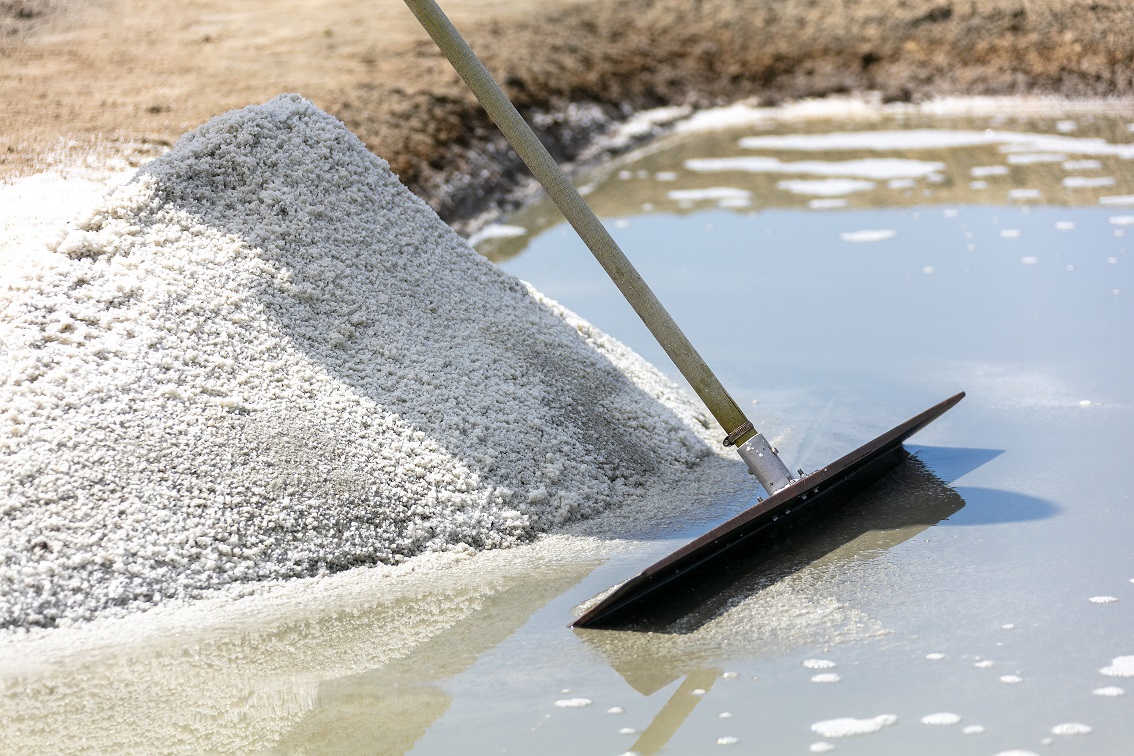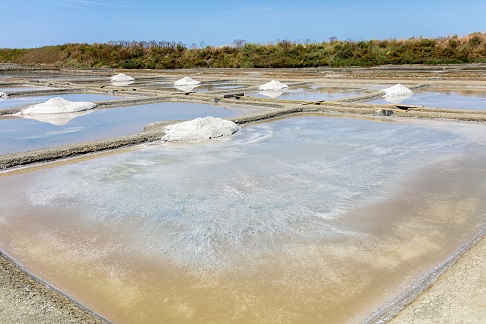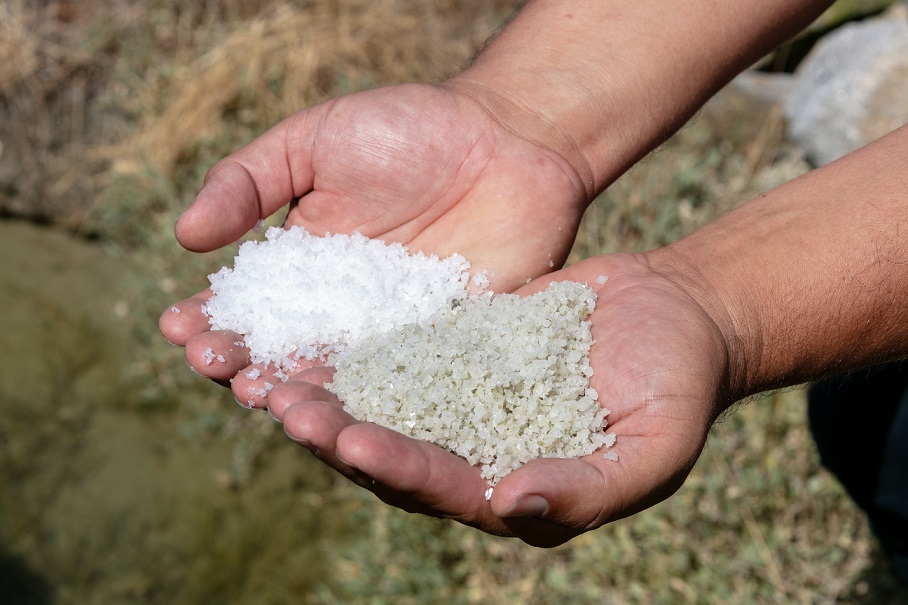- Not all salt is created equal, as Nikki Whiteford discovered on a visit to the Guérande in France, home of the authentic grey sea salt and its precious fleur de sel

In Celtic Western France, set against the backdrop of the Atlantic sea, the salt marshes of the Guérande play a vital role in the region’s identity and culture, as well as its economy.
On every market stall or grocery shelf in the region you’ll find bags of its authentic grey sea salt in abundance; but few people understand the traditional and painstaking craft – not to mention the perfect mix of sea water, sunshine and wind – that goes into producing one of nature’s purest and most important harvests.
If you’ve had the pleasure of travelling around coastal France, you may well have spotted its many sprawling salt marshes - little piles of sparkling salt dotted around the edges of a patchwork of rectangular pools.
I was invited to visit the region and discover the secrets behind its revered salt by Le Paludier de Guérande - a brand that was born over 30 years ago, with a key objective to continue the heritage of salt farming in the region, passing the precious legacy down from generation to generation.

Since 2012, Le Paludier de Guérande grey sea salt has held Protected Geographical Indication (PGI) status, which recognises its quality, authenticity and strong local roots.
Salt has been produced in the Guérande since the 10th Century, and to this day around 400 paludiers (salt farmers) continue this ancestral and painstaking craft, harvesting natural grey sea salt by hand across over 2,000 acres, with each farmer owning a number of pools, selling their salt onto local retailers, or to export.
Timing is everything
Although the salt harvest generally only takes place from June to September, it is throughout the winter that the salt farmers work tirelessly to prepare the pools. This involves clearing out algae, weeds and sediment to maintain the unique and mineral-rich, grey clay base where the precious salt will form. Once the season begins, the farmers assess water levels and conditions daily to aid the evaporation process that will create the salt. It’s a skilled job, and each farmer spends years learning the craft.
Guided by the rhythm of the tides, sea water flows through a network of basins, gradually evaporating under the combined actions of sun and wind. By the time it reaches the final pools, the brine is at a concentration of 240g and is ready to reveal its hidden treasure: grey sea salt.
The harvest relies entirely on the perfect balance of weather conditions. Heavy rainfall can halt production completely, which is why 2024’s salt harvest was so poor; unpredictable weather and heavy rain throughout the summer months meant very little salt was formed. With salt a huge part of the local economy, poor harvests can have a huge and detrimental impact.
Fortunately the 2025 season has started well. Hot days and little rain have meant that a salt farmer can harvest twice (sometimes until 10pm in the height of summer) with each pool offering up to 60kg of grey salt a day. With the sun beating down on their backs, each paludier uses ancient gathering techniques that have survived the centuries, carefully gathering the abundant grey salt through a series of pushing and pulling motions using traditional tools, until it collects finally in a glistening heap, ready to be wheelbarrowed away for drying.

However, before the grey salt is gathered, it is the first salt that forms on the surface of each pool that is the true treasure. Shimmering on the surface of the water, these delicate crystals are known as fleur de sel, and it is these that are considered the ‘white gold’ of the region, providing the true bounty for the paludiers.
White gold
Fleur de sel is a pure and natural white salt that is incredibly rare and precious. These crystals (shaped like pyramids) float to the surface when the weather conditions are just right, and by the end of the day (around 6pm) salt farmers will carefully gather the fleur de sel using a traditional tool called a lousse. Whereas a farmer can harvest around 30-50kg grey salt a day, they can only expect around 2-5kg of fleur de sel, which is why it is so revered, costing up to 15 times more than its grey counterpart.
Currently around 20 tonnes of the Guérande’s grey salt is exported to the UK to top end food stores such as Planet Organic and prestigious restaurants. For delis and farm shops, it provides the perfect opportunity to offer something with true provenance and craftmanship to their foodie customers.

Xavier Delamere (UK importer of La Paludier De Guérande grey salt and fleur de sel) says there’s a huge lack of understanding around salt, explaining that the Guérande grey salt offers huge benefits, being high in potassium, magnesium and calcium thanks to the natural clay traces and absence of any refining process. “What I always say is that rock salt is for the dishwasher, sea salt is for the table,” he laughs. “Our grey sea salt enhances and brings out the flavour of your dishes, while the fleur de sel is for the end of cooking or for finishing at the table.”
Indeed, as I discovered during my trip, fleur de sel is not out of place atop chocolate torte, ice cream or even in coffee to take away the bitterness. In the Guérande, its sea salt is used widely and liberally; local bakers use it to ensure crusty, aromatic and mineral-rich bread, whilst chefs will use it frequently as a salt-cure or to bake fish in a thick salt crust.
What is clear is that the salt of the Guérande is woven into all aspects of life in the region; it’s the lifeblood for many farmers, a must-have for chefs and a favourite on the tables of restaurants. Soon, it is hoped that this legacy of craftsmanship makes its way into more kitchens across the world.
Click here


